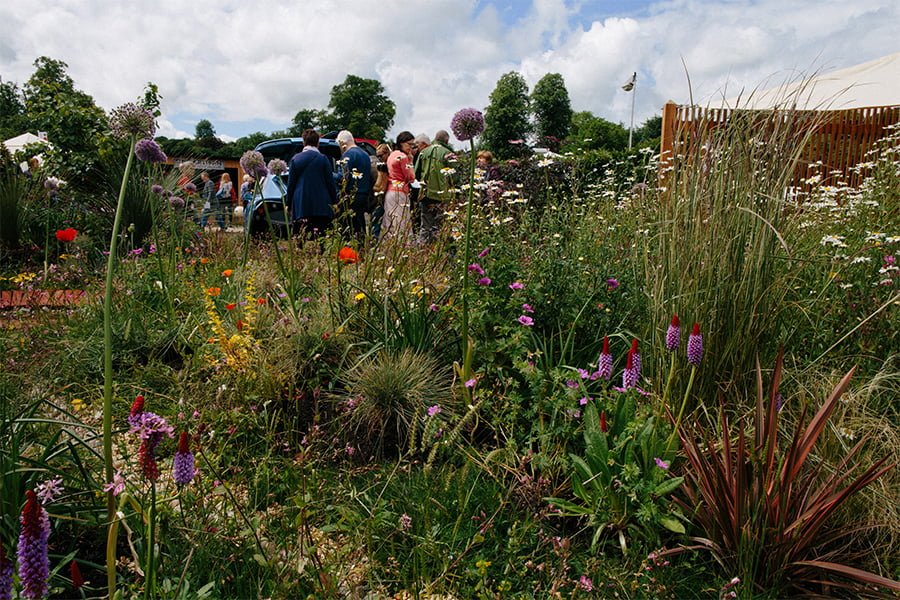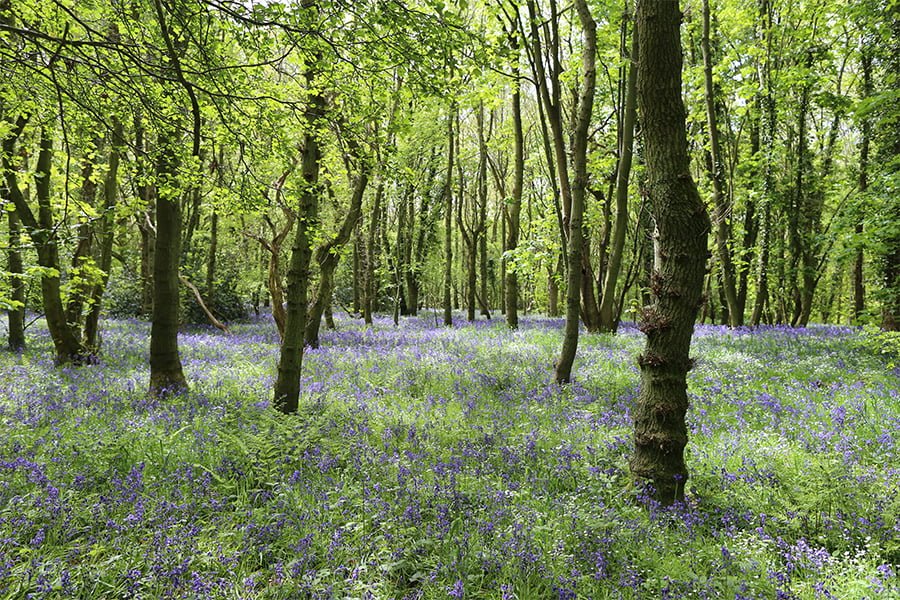
Following my colleague Charlotte’s article earlier this year regarding climate change and the role of the landscape profession, I have taken this opportunity to expand on this, specifically in relation to landscape management, and to discuss in more detail some adaptation and mitigation techniques that we must all now consider in this age of climate and biodiversity emergency.
Today, we’re increasingly more aware of the impacts of climate change as they affect our day to day lives with the narrative ringing through politics, advertising and the media. This however presents a generation-defining opportunity for landscape and built-environment professionals to implement climate change adaptation, mitigation and resilience within our working practice, which is urgently needed now more than ever. Landscape Management will be paramount to the long-term success of any adaptation and taking steps to proactively address Landscape Management at the inception stage of projects will provide a framework for resilience. It will also ensure the longevity of our schemes through adaptive management that establishes more sustainable ways to manage landscapes.
As Landscape Managers, we often require a strong understanding of the past, present and future of our project sites and assets; and thus, a thorough understanding of the climatic change across the UK and its impacts is crucial in our service delivery. Climate predictions conducted by The Met Office categorise the risks of heatwaves and extended periods of drought in addition to a substantial change in the character of our rainfall and its impacts as the biggest changes we will face here in the UK. In light of this, the Government has identified the following risks as those which are set to impact our natural and built environments within the Climate Change Risk Assessment 2017 (CCRA), these are;
Arguably a number of these are present today and are expected only to be exacerbated in the short to long term unless serious interventions are made. And these predictions, and the associated risks, present significant challenges to those managing land. The following points identify key considerations and scenarios that landscape managers are likely to encounter, and which can be mitigated through careful design and management:
Defra, through the National Adaptation Programme (NAP), set out several objectives or guiding principles which they envisage will provide a robust response to building resilience to climate change in the UK, and which are directly aligned to policies set out within the Government’s 25-year Environment Plan. These principles include:
Landscape management is critical to the success of all of these principles. Whilst good planning and design are key, proactive and adaptive management and maintenance of these measures is vital in ensuring they deliver their contribution to climate change resilience in the long term. Our expertise in habitat and woodland management, the management and maintenance of SUDS, astute knowledge of bio-security and treatment of invasive non-natives species, in addition to the production of detailed landscape costings all contribute to the successful delivery of these objectives.
The NAP also promotes Natural Capital thinking as the desired approach in combatting the risks of climate change on our natural environment. Adopting this approach will enable landowners and managers to further understand the contribution that our natural resources provide and how these assets can be utilised to mitigate the impact of climate change and inform the development of adaptive strategies, which can be implemented through proactive and sustainable landscape management.
Similarly, long-term objectives have been pushed to the forefront of the agenda by the forthcoming Environment Bill, which will mandate Biodiversity Net-Gain to ensure no net loss of native habitats as a consequence of development and ensure that development leaves biodiversity in a better state than before. The Environment Bill will also make it obligatory to have effective management of all associated habitats and landscapes for a minimum 30-year period secured through a planning condition. This will contribute to efforts in combatting our biodiversity emergency, whilst providing a framework for adaptive management to preserve and enhance our ecosystems for the future. Ensuring Landscape Management is considered as early as possible is crucial in ensuring long term success through the delivery of the BNG good practice principles. Involvement from the outset will assist clients through the preparation, design and implementation stages, advising on stakeholder consultation and procurement of works. Providing informed mechanisms for managing, monitoring and reporting, means that biodiversity gains can be achieved early in the project life cycle, maximising the benefits for wildlife, the client and the local community.

Whilst most resources currently available provide general principles for adaptation, there is a need for further information providing specific applications and practical solutions to assist those decision-makers in applying relevant measures. Whilst this is a fast-moving field, Natural England and the RSPB through their Climate Change Adaptation Manual, provide one such valuable resource. This details both specific applications and practical options associated with adaptation management across a variety of landscape and habitat types. Importantly, this latest revision includes Green Infrastructure (GI) and provides an in-depth assessment of the risks, impacts on biodiversity and communities. It sets out what can be achieved from successful design, implementation and management of GI, as a way of tackling the effects of climate change within our urban environments. The manual also provides guidance on assessment as a means of embedding climate change adaptation, these six to eight-step approaches are flexible and easily adapted for use on a wide range of projects and planning exercises. The manual adds that through the application of climate change adaptation into our working practice, the following four points can be achieved. I’d add that these points are not only relevant to landscape managers but all landscape and built environment professionals and are crucial in ensuring the success of all schemes;
I would like to conclude by emphasising the urgency in which we all need to respond to this crisis; the last 18 months have shown that we’re capable of change across all industries and how we continue to adapt to these changes even today. This should be no different in the face of the climate and biodiversity emergency and in comparison, requires an unparalleled change to ensure our built and natural environments continue to provide the many benefits they do today.
As professionals, we have a duty to ask questions, advise and make changes within our work to combat these impacts and I would wholly urge you to start to consider making these changes today. Here at TEP, we are advising our key clients on climate change adaptation, mitigation and resilience measures and the opportunities available to them, whilst supporting those currently ahead on implementing theirs (NT Wallington). I hope that this article has provided some insight into the risks, consequences and impacts of a changing climate and how proactive landscape management is imperative in maximising and safeguarding our future landscapes.
Sam Marshall
Senior Landscape Manager
To learn more from our Landscape Managers click here or to view some of our latest projects click here.








